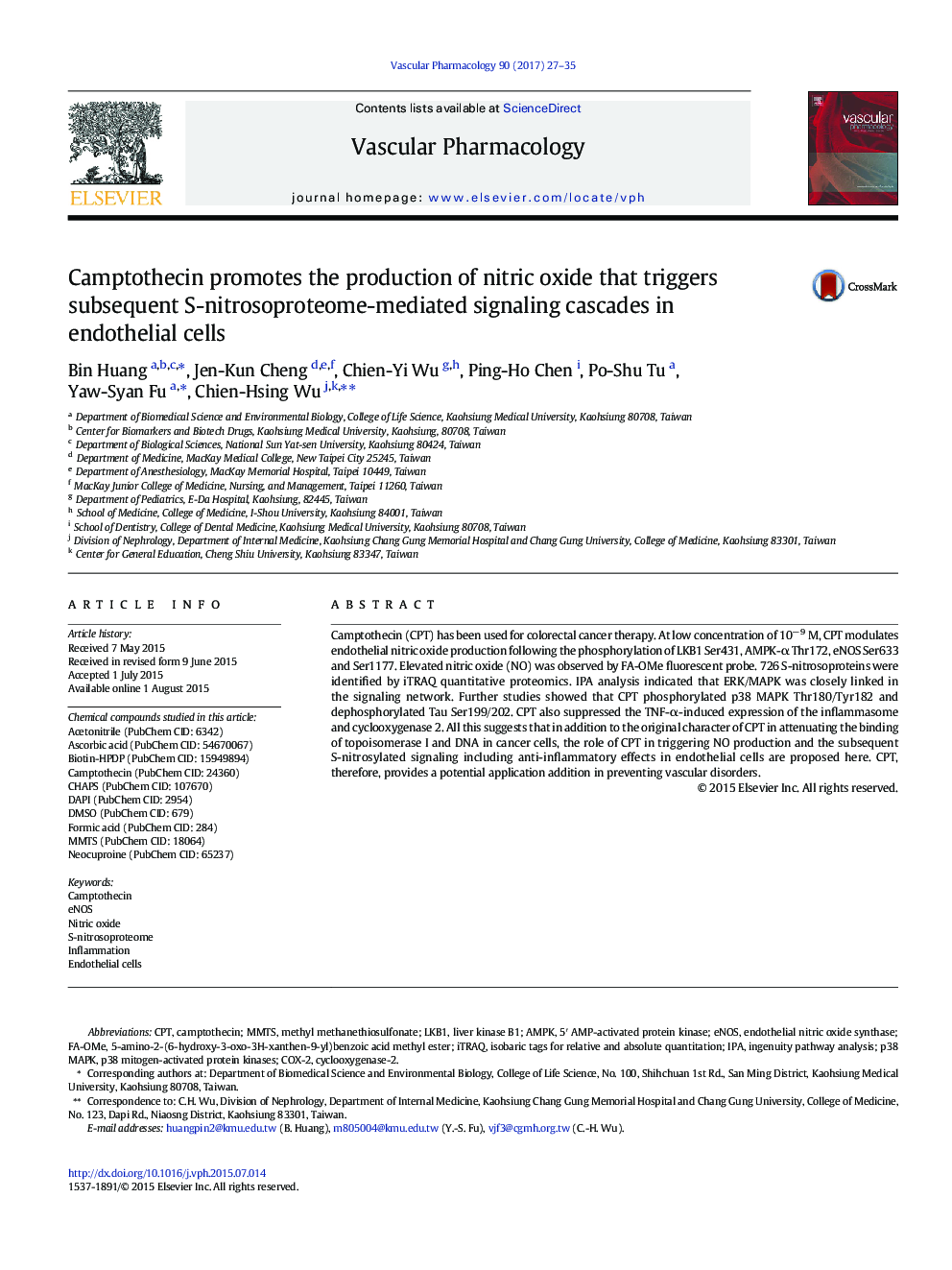| Article ID | Journal | Published Year | Pages | File Type |
|---|---|---|---|---|
| 5558875 | Vascular Pharmacology | 2017 | 9 Pages |
â¢CPT can phosphorylate the LKB1-AMPK-eNOS cascade.â¢CPT-induced 726 S-nitrosoproteins were firstly identified.â¢CPT increased the phosphorylation of p38 MAPK Thr180/Tyr182 and decreased the phosphorylation of Tau Ser199/202.â¢Expression of inflammatory proteins was inhibited by CPT.â¢CPT provides vascular homeostasis at low concentrations.
Camptothecin (CPT) has been used for colorectal cancer therapy. At low concentration of 10â 9 M, CPT modulates endothelial nitric oxide production following the phosphorylation of LKB1 Ser431, AMPK-α Thr172, eNOS Ser633 and Ser1177. Elevated nitric oxide (NO) was observed by FA-OMe fluorescent probe. 726 S-nitrosoproteins were identified by iTRAQ quantitative proteomics. IPA analysis indicated that ERK/MAPK was closely linked in the signaling network. Further studies showed that CPT phosphorylated p38 MAPK Thr180/Tyr182 and dephosphorylated Tau Ser199/202. CPT also suppressed the TNF-α-induced expression of the inflammasome and cyclooxygenase 2. All this suggests that in addition to the original character of CPT in attenuating the binding of topoisomerase I and DNA in cancer cells, the role of CPT in triggering NO production and the subsequent S-nitrosylated signaling including anti-inflammatory effects in endothelial cells are proposed here. CPT, therefore, provides a potential application addition in preventing vascular disorders.
Graphical abstractDownload high-res image (77KB)Download full-size image
